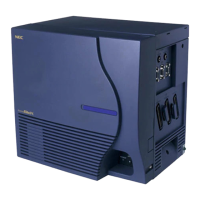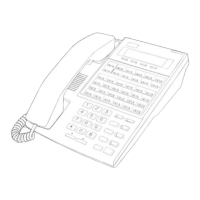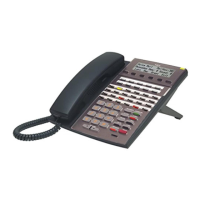Document Revision 1 Electra Elite IPK II
2 - 306 Direct Inward System Access (DISA)
Conditions
The DISA caller must use an analog type (DTMF) telephone. DISA is compatible with
calling devices that meet the DTMF signaling requirements of EIA Specification RS-464.
DISA trunks must be ground start or supervised loop start.
The Continue/Disconnect code must be DTMF.
With an analog trunk, the Continue/Disconnect code may work using DTMF sounds from
the opposite side trunk. With an ISDN trunk, Program 14-01-25 must be enabled to detect
the Continue/Disconnect code.
The Continue/Disconnect code is not accepted while dialing a trunk.
Continue/Disconnect codes will not work if all DTMF receivers are busy.
When used with the Networking feature, both systems must be programmed the same.
In a system with ARS enabled:
When a DISA caller dials 9 for an outside call (if allowed), the system routes the call via
ARS.
In a system with ARS disabled:
When a DISA caller dials 9 for an outside call (if allowed), the system uses the routes
programmed for Trunk Group Routing.
Transferred calls on DISA, DID, DIL, ISDN trunks, or from the VRS can display the reason
a call is being transferred (Call Forward, Busy, No Answer or DND).
Long conversation cutoff is controlled separately for manually transferred Tandem Trunk
calls, automatically transferred Tandem Trunk calls, and DISA calls.
Tandem Trunking also uses the Continue/Disconnect codes DISA uses.
Department Calling with Overflow Message requires a DSP daughter board for VRS.
Default Setting
Disabled
System Availability
Terminals
Remote Analog DTMF (2500 type) telephones

